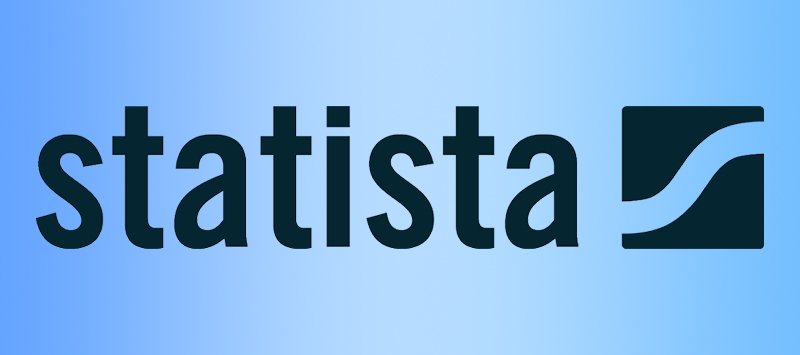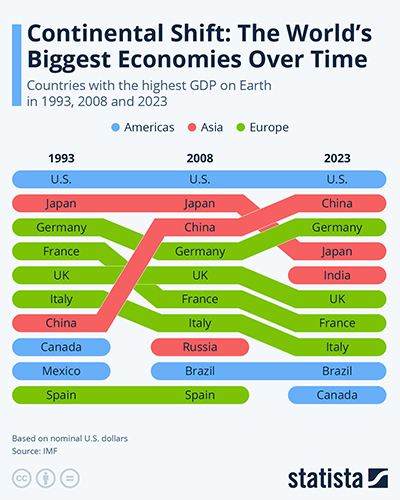
Statista Now Available Through UCI Libraries
Statista, a global data and business intelligence platform, is now available free of charge to all UCI students, staff, and faculty. Used by over 4,500 academic institutions, the Statista portal integrates thousands of diverse topics, with data and facts from a wide range of sources, onto a single platform.
 UCI users can access Statista’s collection of statistics, reports, and insights on over 80,000 topics from 22,500 sources in 170 industries. Information sources include market research, trade publications, scientific journals, and government databases. In addition to tables and charts, Statista also provides infographics and detailed studies on select industries and topics.
UCI users can access Statista’s collection of statistics, reports, and insights on over 80,000 topics from 22,500 sources in 170 industries. Information sources include market research, trade publications, scientific journals, and government databases. In addition to tables and charts, Statista also provides infographics and detailed studies on select industries and topics.
Julia Gelfand, UCI Libraries’ research librarian for applied sciences and engineering, explained that the demand for Statista within UCI has steadily increased as the database has matured into a global portal conducting its own market and consumer studies and surveys.
“We think our users seeking data and statistics will find Statista a dependable and efficient resource,” said Gelfand. “Some of the public data can be found via other channels but the site’s ease of use, downloadable visualizations, and easily cited sources make it almost a one-stop reference for a wide swath of users.”
What Types of Data Are Available?
UCI users can access more than 1.9 million statistics and forecasts as well as special reports and trend analyses from over 22,500 sources. Including both US-centric and global statistics, Statista content includes insights and facts from 170 industries and more than 150 countries, in these fields and more:
- Chemicals and resources
- E-commerce
- Economy and politics
- Energy and environment, including climate change
- Health, pharma, and medtech
- Entertainment and media
- Sports and recreation
- Travel and tourism
- Technology and telecommunications
From large-scale historical data and projections to fun snapshots of consumer products and trendsetters, users will find both raw data and comprehensive reports on specific topics. Here is just a sample of the types of reports, insights, and brand awareness studies available:
 Economic impact of the Russia-Ukraine war: Statista overview report on the economic impact of the Russian invasion of Ukraine (as of February 2023)
Economic impact of the Russia-Ukraine war: Statista overview report on the economic impact of the Russian invasion of Ukraine (as of February 2023)- The Era of Taylor Swift: Spotlight report on the cultural and economic impact of Taylor Swift and her Eras Tour
- Nonalcoholic beer drinkers in the United States: Report including demographics, lifestyle, opinions, and marketing touchpoints
- Global climate change: Worldwide statistics, facts, and projections
- What Americans Think About Medical Cannabis: November 2023 consumer insights survey
How Can I Use the Data?
UCI Libraries’ institutional license includes publication rights for all Statista content. This means data, data visualization, and citations can be exported for use in research papers and publications. Reusable charts and infographics can be downloaded in PPT, PDF, PNG, and CSV formats, and automatic citation output is available in APA, Chicago, Harvard, MLA, Bluebook, and IEEE formats.
Statista is available to users with a valid UCInetID both on and off campus. Simply connect through a UCI campus internet connection or when logged into the UCI VPN. (For VPN instructions, see the UCI Libraries’ Connect from Off-Campus webpage.)
Related Libraries Resources
Students, staff, and faculty with a UCInetID can also access these related data repositories and databases:
- SimplyAnalytics: Mapping and data visualization application that lets users create interactive maps, charts, and reports. Includes demographic, housing, employment, consumer spending, and business data for the United States.
- Data.gov: Provides access to datasets published by agencies across the U.S. federal government.
Other recent additions to the UCI Libraries’ collection include comprehensive health sciences, literature, and news archives:
- Daily Observer Digital Archive: Comprehensive archive of The Daily Observer, Liberia’s best-known, independent, national newspaper. Published in English and founded in 1981, the paper is notable for its coverage of the modern history of Liberia, including the Liberian Civil War, through its current phase of development.
- El Mundo Digital Archive: Complete newspaper archive of Puerto Rico’s El Mundo, which was produced between 1919 and 1990. Key topics covered by the newspaper include industrialization of Puerto Rican society, the Great Depression, territorial relations with the United States including citizenship and activities of independence movements such as the Macheteros and Fuerzas Armadas de Liberación Nacional, the rise of the Popular Democratic Party, the Ponce massacre, and the Ley de la Mordaza (Gag Law).
- Online Egyptological Bibliography (OEB): Collection of references in Egyptological literature including the records and abstracts from Annual Egyptological Bibliography (AEB, 1947-2001), combined with Bibliographie Altägypten (BA, 1822-1946), the Aigyptos database with keywords, and more than 50,000 further items. Coverage is from 1822 to the present.
- LWW Health Library Pathology: Image-rich, interactive resource for pathology residents, residency directors, and pathologists that includes selected set of textbooks, thousands of annotated images, and self-assessment questions to help with image/specimen interpretation, making accurate diagnoses, and certification exam success.
For a complete list of databases subscribed to by the UCI Libraries, see our Databases A to Z Research Guide.
Still have questions? Check out the Databases to Get You Started guide, or contact Reference Services via email, chat, or phone or schedule an in-person or virtual appointment with your subject librarian.

